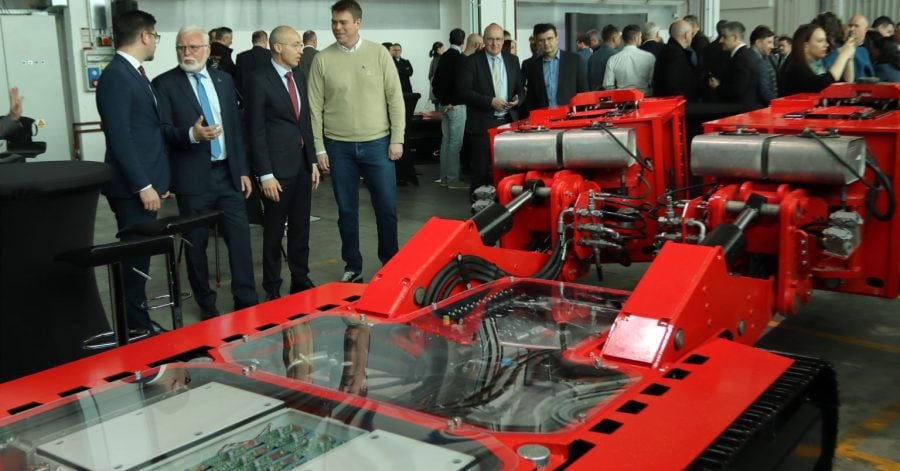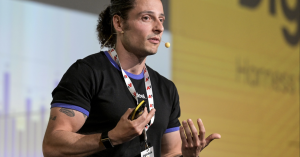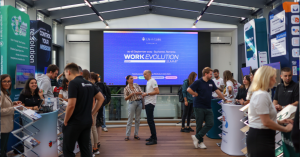“Don’t send a man to do a machine’s job” is the motto of Croatian engineering company DOK-ING. And with its products, technologically advanced robots, the company wants to minimize the risks for workers in one of the most dangerous industries today – underground mining.
This week, DOK-ING presented its latest innovative robotic fleet for underground mining called the Narrow Reef Equipment (NRE).
According to Luka Petro, DOK-ING’s mining program manager, the use of robotic and remote-controlled equipment is pushing the boundaries in the underground mining industry and strives to protect human lives.
“By sending robots instead of humans to the unsupported areas of underground mines, DOK-ING significantly increases safety. Further, DOK-ING changes the bottom line of the mine operating companies,” Petro tells The Recursive.
As he explains, the NRE also makes ultra-low profile mechanized production possible, which up until now has been done either manually, or resulting in up to 50 percent of waste rock. Additionally, due to high cost and high risk of manual production, the resulting ore bodies are not profitable. Therefore, the abilities that the NRE fleet provides can also lead to cost savings for the companies operating them.
“Electric-driven tracked machines, such as DOK-ING’s NRE fleet compared to wheeled diesel-powered machines can operate on high angle slopes up to 22 degrees (conventional mining machines operate on slopes up to 10 degrees). This ability redefines mine design limitations and underground mine infrastructure requirements that can lead to significant underground mine development cost savings and even makes some of the dipped ore bodies profitable,” Petro says.
Developing technologically advanced robots for more than two decades
The NRE is remotely controlled, eliminating the presence of people in unsecured parts of the mine. The robots are also small by height, which allows them to enter the world’s lowest mines. Building such technologically advanced products took DOK-ING almost two decades – in 2002 the company launched its first product called XLP Dozer.
“XLP Dozer is successfully used for cleaning extra low profile production panels and replacing the extremely dangerous and inefficient method of scraper winches cleaning. XLP Dozer has proven to be six times more efficient for cleaning and incomparably safer. The journey of NRE started on the good results of XLP idea. With the cooperation of American Platinum, DOK-ING started in 2011 with the development of an Ultra-low Profile fleet of machines that today we call NRE,” Petro tells The Recursive.
Today, the Croatian company has more than 70 percent of the market share in more than 40 countries globally. Besides its headquarters in Zagreb, the company also has offices in North America, Europe, Africa and Asia.
Positive impact on the environment
The use of these robots also has a positive impact on the environment, as the electric drive eliminates noise and impact of exhaust gasses spaces and reduces the carbon footprint of the overall exploitation process.
According to Petro, the greatest impact NRE has on the microenvironment is by making underground mining work conditions drastically safer, and operator-friendly, eliminating diesel exhaust in confined spaces. Noise levels are also significantly less.
“DOK-ING finally gave miners a tool they deserved. The environmental macro impact consists of introducing electric heavy machinery into underground mining, reducing dependency on fossil fuels, and increasing energy efficiency,” Petro points out.
When it comes to the future use of such technology in the mining industry, Petro says that there will be plenty of other opportunities to showcase the benefits that the NRT fleet can bring.
“There are several mine regions worldwide with similar issues and similar ore body structures. By introducing the first electric fleet in underground mines, DOK-ING is in the first row of the electrification agenda in the conservative mining industry. Mining companies will have to explore new equipment and new mining equipment to respond to growing raw materials demand,” Petro concluded.








